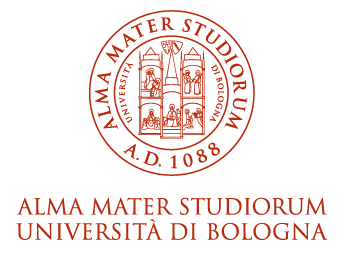- Docente: Elisa Michelini
- Credits: 6
- SSD: CHIM/01
- Language: English
- Teaching Mode: Traditional lectures
- Campus: Bologna
- Corso: Second cycle degree programme (LM) in Bioinformatics (cod. 8020)
Learning outcomes
At the end of the course, the student has the basic knowledge in ultrasensitive and rapid methods based on molecular recognition combined with selective and highly detectable probes: Immunoassay, Hybridization reactions, biosensors, FRET,BRET, whole cell biosensors; Soft impact mass spectrometry technologies and smart sample handling for proteins /peptides quantitative analysis and identification in complex bilogical matrices; Combined non invasive separative technologies (FFF) for functional proteomics study; Luminescence Molecular imaging: localization and quantification of analytes in single cells and tissue (combined with microscopy), whole organ and living organisms using nanoparticles and recombinant bioluminescent cells.
Course contents
Introduction to proteomics: structural and functional proteomics, strategies for proteomic analysis.
Separative techniques in proteomics: gel electrophoresis (SDS PAGE, 2D PAGE), non-denaturing
gel electrophoresis, capillary electrophoresis, HPLC (reverse phase, ion exchange, size exclusion), multidimensional HPLC.
Mass spectrometry techniques in proteomics: soft ionization techniques, MALDI and ESI ionization sources, quadrupole mass analyzers, time-of-flight mass analyzers (TOF), hybrid analyzers (Q-TOF), mass spectrometers (MALDI/TOF and ESI/Q-TOF), SELDI/TOF analysis.
Protein identification: analysis of intact proteins by ESI/MS and MALDI/MS, in-gel digestion, in-gel digest analysis by MALDI/MS and ESI/MS, database search for protein identification.
Applications of proteomics: proteomics in clinical analysis, “shotgun” proteomics, peptide fingerprint mapping, study of protein complexes, studio di complessi proteici, detection and identification of post-transcriptional protein modifications.
Experimental (Two hybrid systems, FRET, BRET, phage display, microarrays, biosensors) and bioinformatic approaches to predict protein funtion and protein-protein interactions.
Luminescence Molecular Imaging: localization and quantification of analytes in single cells and tissue (combined with microscopy), whole organ and living organisms using nanoparticles and recombinant bioluminescent cells.
In silico cloning and mutagenesis of recombinant proteins.
Readings/Bibliography
Scientific publications will be provided during the course.
Discovering Genomics, Proteomics and Bioinformatics (2nd Edition) by A. Malcolm Campbell and Laurie J. Heyer (Mar 12, 2006)
Proteomics in Systems Biology : Methods and Protocols (2016), Editor: Jörg Reinders. (Series: Methods in Molecular Biology) , Vol No.: 1394 ISBN: 978-1-4939-3339-6
Protein-Protein Interactions: Methods and Applications (Methods in Molecular Biology) 2nd ed. (2015) Editors Cheryl L. Meyerkord, Haian Fu
Protein-Protein Interactions in Drug Discovery. Methods and Principles in Medicinal Chemistry. Wiley-VCH (Volume 56); Edited by Mannhold, Raimund / Kubinyi, Hugo / Folkers, Gerd
Practical Protein Bioinformatics. Florencio Pazos & Mónica Chagoyen. Springer (2015)
Teaching methods
The course consists both in lectures dealing about the topics listed in the program and a series of in silico labs (experiments and/or demonstrations concerning common proteomics procedures and applications)
Assessment methods
At the end of the course oral examination will take place to ascertain the acquisition of the learning outcomes of the course:
- basic knowledge in proteomics (soft impact mass spectrometry technologies and smart sample handling for proteins /peptides quantitative analysis and identification in complex biological matrices).
-knowledge about interactomics strategies (both experimental and bioinformatics tools)
-knowledge about methods based on molecular recognition combined with selective and highly detectable probes and luminescence molecular imaging
Oral exam has an average duration of 20 minutes and consists of 3 questions on the topics of the course. Final score is the average of the marks obtained by the student in the separate questions.
Teaching tools
Video and overhead projector. Slides of all the lectures are available as PowerPoint files.
Office hours
See the website of Elisa Michelini
